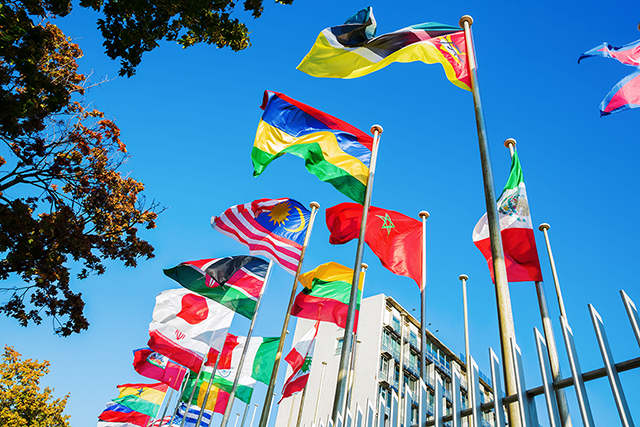Thai World Heritage sites receive delegation from Myanmar
As part of the preparation for the World heritage nomination in Myanmar, the delegation from the Ministry of Religious Affairs and Culture of Myanmar (MORAC) participated in a week-long study trip to the World Heritage sites in Thailand co-hosted by the Thai Fine Arts Department and UNESCO Bangkok.
The study visit to Thai World Heritage sites by the delegation took place from 2 to 8 October 2017. The delegates had the opportunity to observe and learn from the examples of heritage management in Thailand. The delegation is currently preparing two future World Heritage nominations, namely Bagan and Mrauk-U for the sustainable development of the country.
The visit included the agricultural area in Si-Thep and Kamphaneng Phet where the delegation had the opportunity to observe the water system of Ping River canal.
At Sukhothai and Associated Towns World Heritage site, the delegation learned about the local community development at World Heritage sites from DASTA (Designated Area for Sustainable Tourism Administration) which is the key agency of the management.
The group was also accompanied by a local guide trained under the UNESCO-DASTA cooperation project “Cultural Heritage Specialist Guide” who led the group to local cultural attractions in Sukhothai. Throughout the visit, DASTA provided the group with useful information about the management and helped the delegation learn the importance of improving the local people’s well-being within the framework of Integrated Tourism management.



The group extended their visit to Chiang Mai where Chiang Mai National Museum, Thung Roeng Royal Agricultural Station, and Panyaden International School welcomed the delegation.
Thung Roeng Royal Agricultural Station in Chiang Mai was initiated by the late King Bhumibol to support local farmers and encourage sustainable agri-tourism. The visit to the Royal Project was particularly useful for the group of experts from Myammar since the current and proposed World Heritage sites in Myanmar are located in agricultural communities and they face the challenge of ensuring the sustainability of the local agricultural practices, while at the same time, being harmonious with the cultural heritage and native environment.
As Thung Roeng Royal Agricultural Station set an exemplary model in promoting sustainable development of local agricultural communities, their expertise in eco-tourism/agri-tourism provided an useful insight for the delegation, particularly how to promote the sustainable development of agriculture for the benefit of local people as part of the integrated management of cultural and natural heritage.

Additionally, the visit included Panyaden International School where an excellent example of promoting sustainable use of local building material was demonstrated. During the visit, the delegation learnt about the vernacular building materials and technologies and the importance of sustainable construction which the delegation can apply to archeological sites in Myanmar.
Cultural Heritage sites in Thailand demonstrate excellent models of sustainable tourism management well integrated to cultural heritage management. The sites efficiently demonstrate that the interpretation of the significance of the monument is not limited to its artistic and architectural value but also its understanding of natural environmental system such as the hydrological system integrated to the cultural landscape. The delegation also appreciated the inspiring examples of cultural management plans focusing on community involvement. This learning experience will be helpful for the delegation to encourage the people to be more involved in the nomination process for the two future world heritage candidates.







